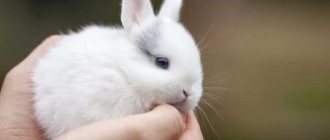- home
- Kinds
13.04.2018
Every pet store has a spacious cage with different types of hamsters to choose from. Due to their simple care and maintenance, small rodents are a very popular type of pet. But few people know that they just recently came to our house from the wild. Some of their varieties still live only in natural conditions. For example, an ordinary hamster.
Do all hamsters fight each other?
In the wild, all living things fight for the right to own and control resources, otherwise they risk death.
Hamsters lead a solitary lifestyle and when they meet similar rodents, they always begin to compete. Animals kept in captivity have retained the instinct of intraspecific aggression. However, some breeds, such as Siberian dwarf hamsters, are less prone to confrontation. In nature, they live in the harsh conditions of the steppes, so they often unite in pairs or small groups, obeying the leader. But these rodents are also ready to wage a fierce fight if necessary.
Despite their apparent harmlessness, hamsters are capable of showing aggression towards each other.
There are also overly aggressive breeds. Syrian hamsters are considered the most militant, they fiercely defend their territory and are capable of destroying their own offspring.
External features of an ordinary hamster
This rodent is one of the largest representatives of this species. The length without a tail reaches 30 cm, there is a cone-shaped hard tail with short bristles measuring 5-8 cm. The hamster weighs 400-700 grams.
Otherwise, the appearance differs little from dwarf individuals: an elongated muzzle with small round ears, soft thick fur, roomy cheek pouches, low paws with toes and sharp claws. A distinctive feature is the color. The back of the common hamster is brown-gray, the nose, muzzle and paws are white, and the abdomen and chest are black. There are distinct white spots on the sides and behind the ears. It is because of their bright color that they are often the object of hunting. In the photos taken in different regions of the animal’s habitat, you can see the difference in its color depending on the place of residence. There are also completely black varieties, as well as black and white with small gray splashes.
Relationships between rodents and territorial behavior
Agonistic intraspecific behavior of hamsters is well described in the scientific literature.
Males and females during same-sex contacts always show aggression, the degree of which depends on several factors:
- differences in the hormonal status of opponents;
- duration of photoperiods;
- size and complexity of the territory.
The level of aggression increases if hamsters are forced to live in the same territory.
They do not tolerate proximity to individuals similar to themselves and try with all their might to get rid of them.
Habitat of the common hamster
An ordinary hamster chooses to settle in places with a sufficient amount of food: steppes, forest-steppes, meadow glades and even the foothills of mountainous regions (up to 1000 m above sea level). The rodent especially loves the proximity to humans and cultivated plants, and often causes serious damage to agriculture.
The habitat area of this species of hamster is quite extensive. It can be found in the Urals, Altai, in the southern Black Sea regions, Krasnoyarsk and on the border with China. Outside Russia, it is distributed in the Kazakh steppes and in European countries up to the border of Belgium and France. In general, populations of the common hamster are quite extensive, but in some areas of Russia it is listed in the Red Book as an endangered species. In European countries, this individual is also protected, largely due to its unusual color and high popularity in the fur trade.
What does a fight look like?
A fight between hamsters of the same sex always develops according to the same scenario, including the following stereotypical forms of behavior:
- Research and assessment of the territorial parameters and capabilities of the opponent.
- Adopting an offensive or defensive posture.
- A fight using direct attacking and rolling movements.
During a fight, animals make sudden movements, raise their heads, stand on their hind legs, and grind their teeth. They often bite and roll on the floor.
As a result of each battle, a winner and a loser are revealed: the strong hamster occupies the conquered territory, and the weak one runs away from the battle zone. The relationships between males established in the initial fight are maintained in subsequent encounters between them. In addition, about 90% of defeated males adopt a submissive posture when encountering other friendly hamsters, demonstrating conditioned defeat.
Females are generally more aggressive and prone to swift attacks. However, the results of the fight have less influence on the establishment of relations of social subordination between them.
Females are more prone to attack than males.
Interesting facts about pet hamsters
The following interesting facts are associated with domestic hamsters:
- The animal can stuff the amount of grain into its cheek pouches, the mass of which is up to 15% of its body weight.
- The young are born blind and naked, but already with teeth.
- Forest species have a craving for shiny objects, trying to immediately carry them into the hole.
- Over the course of a year, an adult can make reserves that weigh up to 90 kg.
- Female dwarf hamsters can delay childbirth in order to continue the period of feeding their young with milk.
- Keeping such pets in Vietnam is prohibited, because... Rodents are carriers of many diseases.
Chinese scientists have found that some hamsters travel up to 1 km per night to get to a place where there is food. In addition, research has revealed that during a hungry period, an animal is capable of falling into a state of torpor, in which all processes in the body slow down, allowing the animal to survive unfavorable times.
Causes of fights between hamsters
Hamsters are able to live in groups only at a young age, until they are 1.5 months old. As they grow up, they often play with each other, imitating attack and defense. This way they hone their combat skills, which will be useful to them at the stage of independent life. In adulthood, they have many reasons to defend their interests.
Defending territory
Hamsters are territorial animals that mark and defend their space from intrusion by members of related species. The sense of ownership in rodents develops early: at 8-10 weeks they begin to defend the boundaries of their habitat.
If you put pets in the same cage, there is a high probability of confrontation.
In the wild, rival fights occur less frequently, because Basically, animals have enough space and food.
Fight between rodents of different sexes
Collisions often occur between animals of different sexes. When a boy and a girl are placed in the same space, the male begins to sniff and chase the female. If the encounter occurs during estrus, the female exhibits reproductive behavior. There are no agonistic reactions.
On the contrary, during a period of low sexual receptivity, the female shows hostility towards the male, who may respond with evasion or counterattack. In most fights, females win, because they are larger and more aggressive.
Female with children
Females feed their young with breast milk for the first 20-30 days of their life. When the offspring become independent and acquire the skill of obtaining food, adult hamsters begin to perceive them as rivals. If rodents continue to live in the same territory, fierce fights arise between them, which often end in the death of young animals. Therefore, it is recommended to wean the cubs from their mother when they are 3 weeks old.
How to determine the sex of a hamster?
This information may be important if you keep several animals at once and do not plan to reproduce them. Finding out what gender an animal is is not very difficult. To do this, you need to examine him, but this should not be done abruptly so that he does not get stressed. Calm the animal down and treat it to something tasty. Gently take the animal in your arms and hold it on the fold of skin between the shoulder blades, but do not pull.
Inspect the back. Males have pronounced sexual characteristics, but females do not. You can presumably determine the sex simply by the size of the animal - males are usually much larger than females. The latter also have prominent nipples in the abdominal area. Determining the gender of a newborn animal is somewhat more difficult. This can be done along the gap between the anus and urinary opening. For girls this distance is usually less than for boys.
Prevention of aggression between “cohabitants”
It is recommended to place two hamsters of the same litter in a common space, which can adapt to living together.
However, this does not guarantee the absence of competition, so the breeder needs to take several additional preventative measures:
- choose a spacious cage and equip it with several drinkers and bowls;
- ensure that pets always have food and water;
- install play equipment with which rodents will spend most of their energy;
- Regularly remove excrement and change litter.
If fights between pets become more frequent and more aggressive, the animals should be separated temporarily or permanently. Otherwise, fighting may result in injury or death to the hamsters.
If fights become a frequent occurrence, it is better to put the pets in separate cages.
What to feed a hamster
Food for hamsters and small rodents can be purchased at any pet store. These foods contain grains, dried vegetables, vitamins and minerals. But food alone is not enough for the animal.
Check out the rules for feeding hamsters:
- Feed the animal twice a day. Add food at night because the hamster is a nocturnal animal and eats in the dark.
- Don't overfeed your hamster. Three spoons of dry food per day is enough for him. But also make sure that the feeder is not empty.
- Always add water to the drinker, make sure that the water does not stagnate and is clean. The animal will die from dehydration.
- Do not overfeed your hamster with vegetables and fruits. Occasionally you can treat your rodent to a carrot, apple, or pear. Do not feed your pet exotic fruits, citrus fruits, cabbage, onions or garlic.
- Several times a week, treat the animal to a nut or a handful of seeds.
Is it possible to unite rodents?
It is possible to unite pets with each other, although this is not an easy undertaking.
It is recommended to proceed as follows:
- Place and keep pet hamsters in separate cages for at least 2 weeks. In this case, the animals must be nearby, have the opportunity for visual contact and communication.
- Relocate pets to a new shared space. If this is not possible, a female should be placed with a male or an older animal with a younger individual. This does not guarantee the absence of territorial aggression, but it will reduce the likelihood of its development.
Once the rodents are placed in a cage, they should be monitored for several weeks. If hamster fights occur regularly and become more frequent, the individuals need to be separated.
Hamster care
Keeping and caring for a hamster at home is a simple process, but it requires certain knowledge and care. You can determine whether your animal is feeling well by such signs as shiny fur without bald spots, a clean nose and eyes, even breathing, and the absence of digestive disorders. Since the pet usually sleeps most of the day, it is better to assess its behavior in the late afternoon, during the period of activity.
Cage for a hamster
Caring for and keeping a hamster at home always starts with choosing a good cage. They come in plastic and lattice. Plastic container-like ones are most convenient for dwarf hamsters (Roborovsky, Campbell, and dwarf hamsters). But lattice ones are perfect for golden (or Syrian) breeds. The main thing is that the bars of the cage are placed horizontally so that the animal can climb the walls. The gap between the rods also depends on the specific type - for golden, a distance of 1 centimeter is acceptable, for smaller types - less.
If the distance between the bars of the cage is incorrect, the animal may unsuccessfully stick its head between them and die from suffocation.
The next step in caring for an animal at home is to properly equip its “apartment”. It starts with the choice of bedding - both the comfort of the rodent and the time you will spend cleaning the cage will depend on this. It is advisable not to use newsprint as bedding, otherwise your pet may be poisoned by printing toner. In addition, such paper does not absorb liquids and odors well. However, the same applies to ordinary paper or cotton wool. Cotton wool in a cage is also not recommended because the animal's small paws can get tangled in it.
Fillers such as sawdust, hay or wood shavings are better suited. But some animals are allergic to ready-made wooden pellets. Corn (chopped cobs with a few grains left) is recognized as the best option for filling the cage. It is very light and pleasant for the animal. This filler is more expensive than others, but it retains the smell for up to ten days.
Place two feeders in the cage - one will serve for soft food such as fruit, the other for hard and dry food. And for water it is better to purchase a special drinking bowl, changing the contents every day.
Source: Google Images
Source: Google Images
Hamster wheel
Caring for a hamster at home is not complete without providing it with physical activity. To do this, you need to equip the cage with a wheel, and also buy a hamster ball and other accessories (slides, ladders). The wheel must be solid, with transverse protrusions. Then it will be convenient for the animal to place its paws on it.
The rodent will use all this variety in the cage mainly at night, and during the day it will rest in its burrow. A special house can serve as a mink, but sometimes the animal prefers to make its own home by collecting filler or bedding to the side.
Hamster ball
It is worth talking in more detail about such a device as a hamster ball. This is an excellent simulator that will not let the animal get bored. Ready-made balls are sold in stores, or you can make the device yourself. Its purpose is to allow the animal to move freely around the apartment without the risk of being crushed, caught by a cat, or stuck somewhere. A hamster ball will fit especially well in a large apartment or house.
The easiest way to make this accessory is from an ordinary plastic bottle. Due to its lightness, it will not make it difficult for the hamster to move. In addition, you can make holes in it for ventilation. Actually, no other manipulations are required - the hamster ball is ready for use.
You can also take not a bottle, but a plastic ice cream bucket (the main thing is that it is transparent). The bucket must be thoroughly washed and dried, and then small holes must be made in the bottom or lid of the container. Now you can put the hamster inside and close the lid. In a similar way, you can make a ball for a hamster from any container. The stores sell dozens of different beautiful and convenient options.
When to place animals
Quarrels often arise between cohabiting rodents, which are not always a signal for resettlement. Older or stronger individuals sometimes show dominance by making loud squeaks and chasing neighbors. Such outbursts of aggression do not last long and cannot be interfered with.
When cases of aggression become more frequent and methods of dominance become more severe, animals should be housed. For example, this must be done if one of the pets drives a neighbor into a corner, does not allow him to eat or sleep, or bites.
To buy or not to buy?
The first thing you need to pay attention to is that family members are not allergic to animal hair or bedding fillers. Second, but no less important, is the choice of location for the cage of the future pet. Hamsters equally do not like drafts, too warm or cold air, and dampness. They do not belong in a smoky room, on the floor or windowsill. It is important to remember that these are living beings and they have the right to demand that they be treated with dignity.
Other indisputable advantages of keeping hamsters include their low cost and ease of care, which does not require special skills. The small amount of food a hamster needs for a full life will not affect the family budget in any way, and its cage will not take up much space in the apartment.
Reproduction and development of babies
All hamsters are “precocious” pets, their puberty occurs in 1-2 months. This is almost not reflected externally in females, but in boys the testicles begin to protrude. Sometimes they are so big that you are simply amazed!
Despite early sexual development in hamsters, care must be taken that they do not begin sexual activity too early. This is especially harmful for females, for whom pregnancy can end in death during childbirth. The optimal age for pregnancy is 4-5 months.
Here are some interesting facts about the reproduction of pet hamsters:
- pregnancy lasts about 3 weeks;
- after giving birth, within a week the female is able to become pregnant again;
- one married couple can produce up to 10 offspring per year!
- The number of hamsters in one litter can be from 4 to 15.
Newborn hamsters look very touching and defenseless. They are tiny, bald, with closed eyes. During the first days, the hamsters do not leave the nest, but within a week from the moment of birth they crawl throughout the cage in search of tasty seeds. At 2 weeks their eyes open and fluff appears on their body. And when the animals turn one month old, they are already completely independent.
Babies can be tamed after they open their eyes. Hamsters adapt to human interaction faster than adult hamsters. They are also easier to train.
Children of hamsters are shown in the photo:
Water treatments and nail trimming
Hamsters do not like to bathe, so water procedures should be used only when necessary. For bathing, a special shampoo for rodents is best, after which the fur should be blotted with a soft towel. If the room is cool and you are worried that it will freeze, you can lightly dry it with a hairdryer using a gentle stream of warm air.
Overgrown claws are cut off with great care using a special nail clipper or nail clippers.
Getting used to the new home
In order for your new guest to quickly get used to his new conditions, give him a few days to leisurely explore his home. Once the initial stress has passed, innate curiosity will take over and the hamster will begin to explore its cage with interest, feeling increasingly confident.
If there is a need to take the animal, for example, to the veterinarian, it is not at all necessary to take the entire cage with you - it is enough to purchase a small carrier for rodents. Subsequently, it will come in handy during general cleaning of the cage. Alternatively, a well-ventilated cardboard box can be used.
What to do if bitten by a hamster?
Hamsters are harmless, but very sensitive and timid creatures. Therefore, sometimes there is a risk of being bitten, but not out of malice, but for the purpose of self-defense. Additionally, if your hand smells like food, your hamster may simply mistake it for a tasty treat. What to do if you are bitten?
Firstly, remain calm and not punish the animal - he did not do it out of malice. Carefully place it in the cage and treat the bite site with brilliant green, alcohol or hydrogen peroxide, and apply a band-aid. If your hamster is healthy, then there will be no dangerous consequences from the bite.
We buy only healthy hamsters
When choosing a hamster, it is very important to make sure that your future pet is healthy. A visual inspection and observation of his behavior will be enough to make sure that everything is fine with him. So, a hamster is healthy if:
- He has a shiny, thick coat with no signs of hair loss. Scars spoil the appearance of the animal, but do not indicate its poor health.
- his eyes are clear, clean around and shiny.
- There is no nasal discharge, the nose itself is healthy and clean.
- the fur around the anus is clean, without signs of diarrhea or inflammation.
A hamster that has just been woken up should not show excessive anxiety or, conversely, apathy. Both options indicate a stressful state of the animal, which can subsequently result in high vulnerability and disease. Only Roborovsky's hamsters are characterized by increased fussiness in any circumstances.
Cell selection
A cage with vertical or horizontal bars is the most suitable and comfortable home for a hamster. Its size depends on the breed of hamster. For dwarf hamsters - Djungarian and Roborovsky - the height and width are approximately 30 cm, length - 50 cm. For golden or Syrian hamsters, it is better to choose a larger cage - 40 cm wide and high, about 60 cm long.
Unlike Syrian hamsters, Djungarian and Roborovian hamsters are indifferent to climbing rods and other acrobatic tricks, so plastic cages (dunes) are quite suitable for them. Under no circumstances should hamsters be placed in tall and narrow aquariums - bacteria multiply very quickly here, there is high humidity and there is almost no access to fresh air.











